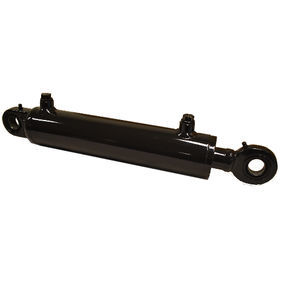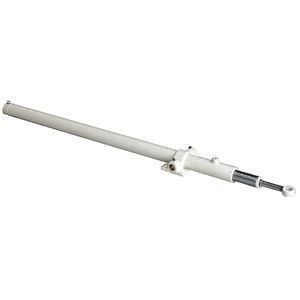
- Power Transmission - Mechanical components
- Actuator and Positioning System
- Hydraulic cylinder
- Taon Hydraulik Komponenter ApS
- Company
- Products
- Catalogs
- News & Trends
- Exhibitions
Hydraulic cylinder KK105/4/1284telescopicsingle-actingindustrial

Add to favorites
Compare this product
Characteristics
- Type
- hydraulic
- Technology
- telescopic
- Configuration
- single-acting
- Applications
- industrial
- Other characteristics
- step
- Stroke
1,284 mm
(50.551 in)- Pressure
180 bar
(2,610.7 psi)
Description
• The normal application of telescopic cylinder is to lift up tipping bodies, loaded with different materials, and consequently discharge this material whilst the cylinder is extended all along its stroke.
• The body weight plus the max payload are the max tipping weight that can be raised by the cylinder. This value, calculated at the max pressure, is a rough indication of thetipping power of the cylinder and must be used as a first criteria for the selection of the cylinder. The real tipping mass can only be calculated by the design engineer of the
dump truck, and must take into account the geometry of the dump body and operating conditions. Never exceed the maximum thrust.
• Never exceed maximum pressure.
• The cylinder has been designed for loads along the longitudinal axis: the cylinder is a lifting device only and may not be used as structural member or be subject to side load.
• Chrome coating type CRL (minimum thickness: 5 μm) on telescopic stages.
• H.S.PENTA warranty does not apply to any kind of corrosion of coated or non-coated parts. See terms of warranty.
• Maximum extension speed less than 0.2 m/s.
• Hydraulic oil temperature admitted between -40°C and +100°C.
• In case the cylinders must be stored, do not remove the package. Store them in a dry place, not exposed to rain. Do not store the cylinders for more than 6 (six) months.
• Further specifications see mounting instructions, hydraulic oil specification sheet, user & maintenance manual.
Catalogs
KK105-4-1284
3 Pages
Other Taon Hydraulik Komponenter ApS products
Cylinders
Related Searches
*Prices are pre-tax. They exclude delivery charges and customs duties and do not include additional charges for installation or activation options. Prices are indicative only and may vary by country, with changes to the cost of raw materials and exchange rates.























